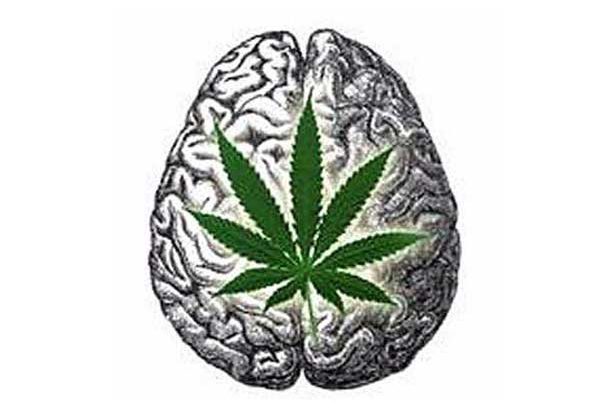Two sides to overcoming antibiotic resistance
Researchers seeking new classes of chemical compounds or pursuing alternative antibacterial approaches make their cases.
Bacteria have persisted on Earth for billions of years, first emerging in the oxygen-starved waters of the early oceans. Today, bacteria continue to thrive in a range of harsh environments, from bubbling hot springs to Arctic ice to the human body, where certain bacteria cause infection. Ever adaptable, these bacteria undergo mutations that allow them to resist the effects of antibiotic drugs. “Antibiotic resistance is a matter of evolution,” said Rolf Müller, a chemical microbiologist at the Helmholtz Institute for Pharmaceutical Research Saarland (HIPS). “It’s not a matter of if; it’s just a matter of when.”
“Anything you throw at [bacteria] provides a selection for a mutation that’s likely to make them able to grow in the presence of that new antibiotic,” said Bob Hancock, a microbiologist and immunologist at the University of British Columbia. “Bacteria become resistant to virtually everything.”
While the development of antibiotic resistance is inevitable, antibiotic misuse and overuse have accelerated resistance, yielding a major threat to human health. With projected death tolls from resistant infections comparable to that of the COVID-19 pandemic, it is critical to find alternate ways to take down bacteria (1). Müller is one of a group of researchers identifying chemical compounds in natural sources that kill bacteria through new mechanisms. Hancock is among researchers developing noncompound alternatives to antibiotics that can both directly and indirectly target bacteria. While they represent two schools of thought, both researchers agree that the two approaches could be used together to attack evasive bacteria from every angle.
No soil left unturned
New classes of chemical compounds that kill bacteria in unforeseen ways may provide antibiotics that overcome current resistance mechanisms. However, less than 25 percent of antibiotics under development meet this criterion (1). Instead, the majority represent a descendant of an existing antibiotic with a structure tweaked by scientists to side step an emergent resistance mechanism. The process repeats, wringing every last drop of activity out of the same basic scaffold. For example, the four-ringed tetracycline core has been modified with various side chains to produce oxytetracycline, doxycycline, and tigecycline (2). “After so many years of first, second, third, fourth, fifth line changes, there’s little you can do about these structures anymore because almost all of the positions on these molecules where changes are allowed have been addressed,” Müller said. “That’s why it’s so important to find novel basic structures where the cycle can be reiterated.”
While medicinal chemistry libraries provide a theoretically unlimited number of compounds, they tend not to include the intricate, hard-to-synthesize molecules that show antibiotic activity. Researchers have had more luck isolating antibiotics from fungi and bacteria themselves. These natural predators use chemical compounds to kill other bacteria that compete for food and resources, providing a valuable source of antibacterial drugs.
For years, researchers scoured extracts from common soil bacteria for new antibiotics, but they eventually started to rediscover the same molecules again and again. However, “more than 99 percent of bacteria and fungi on the globe have never been analyzed,” Müller said. With so much microbial biodiversity unexplored and up to a billion bacteria in one gram of soil, even familiar ground can yield unexpected chemistry.
For example, Müller and his colleagues found a novel class of compounds they termed cystobactamids in a myxobacteria that “lives in everyone’s backyard,” he said. As the bacteria used cystobactamids to prey on a wide range of fellow microorganisms, they evolved to penetrate and inhibit the growth of even double membraned Gram negative bacteria, which feature an extra layer of protection against antibiotics (3).
By studying how myxobacteria avoid the harmful effects of their own cystobactamids, the researchers discovered that the compounds inhibit topoisomerases, enzymes that play critical roles in DNA replication and transcription. They analyzed genomic data and identified other myxobacterial strains with similar biosynthetic pathways that produce natural derivatives with increased potency. The researchers adjusted the cystobactamid chemical structure to enhance its pharmaceutical properties and tested their optimized compound in a mouse model of a Gram negative E. coli infection, where it reduced bacterial load by five orders of magnitude (4). The team observed that the compound acted against an enzyme that had mutated to confer resistance to a clinically used quinolone-class topoisomerase inhibitor, suggesting that it binds at a different site. As changes to the quinolone scaffold have almost been exhausted, cystobactamids may serve as a fresh template for antibiotic development.
While the cystobactamids will eventually face the same fate as the quinolones, these drugs could provide an essential treatment option for people experiencing antibiotic-resistant infections. “Why still develop old-fashioned antibiotics if everybody knows there is going to be resistance? My answer would be because they have, for decades now, saved millions of lives,” Müller said.
Thinking outside the bacs
Hancock attributes the void in effective antibiotics to “trying to do things the same way over and over again,” he said. “Regardless of what compounds we develop, that’s really not going to change the equation. It may help to delay it; it may provide more tools to treat with; but it’s not going to change the equation.”
Alternatives to chemical compound antibiotics include antibodies that bind to and inactivate bacteria, bacteriophages that infect and kill bacteria, and lysin enzymes that destroy the bacterial cell wall (5). Hancock has found another nontraditional approach in cationic antimicrobial peptides, which host organisms produce to defend themselves against bacteria. Rather than forming precise chemical bonds that inhibit specific enzymes, these peptides act as sand in the bacterial gearbox, affecting many of their biological functions. The positively charged peptides can interact with negatively charged lipids in the cell membrane, disrupting membrane structure and biosynthesis. They can also cross both membranes in Gram negative bacteria to access polyanionic DNA and RNA, inhibiting protein synthesis and other processes that require nucleic acids.
While bacteria can develop resistance to cationic peptides over time, it happens very slowly, giving no more than a four-fold decrease in activity after splitting and growing bacterial cells 100 times. “It’s not this ‘one antibiotic, one mechanism’ kind of thing like how penicillin hits cell wall biosynthesis, but rather it’s multiple different mechanisms,” Hancock said. “The reason we don’t tend to see resistance is that you can get resistance for one mechanism, but then if you peel off that mechanism, there’s a whole bunch of other mechanisms underneath that can still result in susceptibility.”
Hancock thinks that researchers should also look beyond drugs that directly interact with and kill bacteria in vitro to strategies that impair bacterial colonization and infection in vivo. While chemical compounds can target these secondary antimicrobial pathways, few have been discovered. “We’re not screening in the right ways to try to exploit real world biology, the nature of the hosts, and the necessity to work together with our immune systems,” Hancock said.
For example, in 65 percent of human infections, free-swimming bacteria clump together on surfaces in the body to form biofilms, allowing them to become 10- to 1,000-fold more resistant to antibiotics. This adaptive growth state is responsible for antibiotic failure in surface-associated infections such as sinus, wound, and lung infections, and yet not a single approved antibiotic targets biofilms (6). Hancock’s team has designed cationic peptides that block biofilm formation, likely by deactivating a key signaling nucleotide in the bacterial cell (7). Similarly, the team demonstrated that cationic peptides with modest direct antimicrobial activity can regulate the expression of cytokines in host cells, suppressing inflammation while boosting infection fighting immune responses (8). “These are situations where I’m not just trying to follow the dictates of what people understand as an antibiotic, but rather figure out what is needed and what are the assets my peptides have that I can exploit,” Hancock said.
Still, antibiofilm and host cell targeting peptides need to be used alongside traditional antibiotic compounds. In one study, the researchers demonstrated that combining subeffective doses of an immune-modulating peptide and antibiotic gave improved antibiofilm activity compared to either alone (9). “There’s more than one way to breathe life into antibiotics,” Hancock said. “Another way is just to take the antibiotics that are not working and figure out how to make them work better.”
By considering unconventional approaches, Hancock hopes that researchers can move the needle on overcoming antibiotic resistance. “Maybe by thinking a little bit outside of the box, we can come up with something that’s going to make a difference,” he said.
Full bibliographic information
Published on 10/01/2024 by EDNN [Exploring Drug Discovery and Development]
Available at https://www.drugdiscoverynews.com/magazine/issue/december-2022-january-2023-18-12





